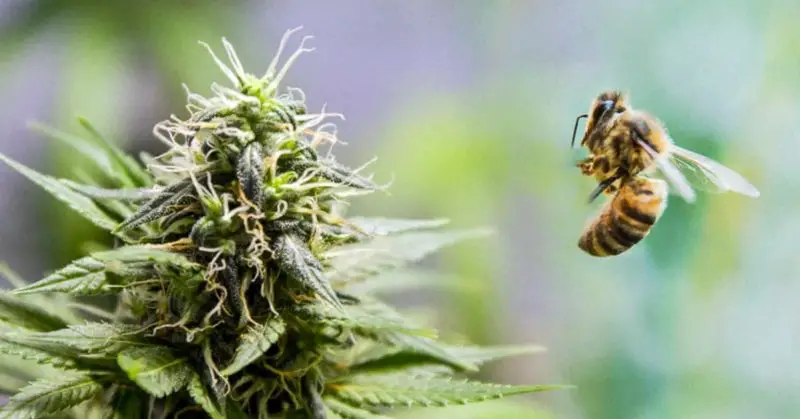Bees are major fans of cannabis. Yes! You read that right. When it comes to the word cannabis, more attention is given to its recreational or medical use. Indeed, marijuana is used for the treatment of chronic pain, vomiting due to chemotherapy, and nausea. However, beyond its medicinal purposes, research has shown that this plant might be beneficial to struggling populations of several species of bees around the world.
The study, which was conducted by researchers at Cornell University and published in Environmental Entomology, shows that bees are attracted to cannabis. It reinforces a previous study published by Colorado University that discovered the same thing.
According to the study, bees are attracted to cannabis due to the pollen in the plants. The study found that the bigger the area covered by the hemp plant, the more likely the bees will swarm the area. As time went on, the number of bees continually increased. What’s more, the bees showed a preference for taller trees, with the tallest cannabis plants attracting a staggering 17 times more bees than the shortest plants.
Furthermore, the study confirmed that the pollen produced by the male flowers is attractive to 16 variations of bees found in the Northeastern United States.
“We identified all bee visitors to the species level and found that hemp supported 16 different bee species. Landscape simplification negatively impacted the abundance of bees visiting hemp flowers but did not affect the species richness of the community. Plant height, on the other hand, was strongly correlated with bee species richness and abundance for hemp plots with taller varieties attracting a broader diversity of bee species,” the study stated.
The reason for this attraction is still unclear. Since cannabis doesn’t produce sweet nectar that attracts insects, neither is it a bright color that is noticeable to bugs; scientists cannot say for sure, the reason for this phenomenon.
On the other hand, female flowers, which are widely known for its soothing and intoxicating effect, holds no appeal to these bees. Scientists feel that this is because female plants don’t produce flowers.
Bees and its importance in plant reproduction
The impact of this study isn’t lost on us. Bees’ attraction to cannabis may pave the way for researchers to figure out diverse ways to support their struggling population. A while back, bees were added to the list of endangered species, and that’s why this research and its result are significant.
Bees are one of the most important pollinators in the United States, especially as it pertains to agriculture. Their natural way of spreading male sex cells of their female counterparts is pivotal to plant reproduction.
According to the UN Food and Agricultural Administration, pollinators are worth an estimated $235 and $577 billion worldwide. In the United States alone, they are responsible for $20 billion of domestic crop production. This implies that its importance cannot be overemphasized. Without bees, we wouldn’t have watermelon, blueberries, and some other crops.
The study author wrote:
“The rapid expansion of hemp production in the United States may have significant implications for agroecosystem-wide pollination dynamics.
As a late-season crop flowering during a period of seasonal floral dearth, hemp may have a particularly strong potential to enhance pollinator populations and subsequent pollination services for crops in the following year by filling gaps in late-season resource scarcity.”
No effect whatsoever
The researchers have also made it clear that there is no likelihood of cannabinoid-rich protein getting into your food supply; neither will the bees start producing honey laced with tetrahydrocannabinol THC.
According to scientists, “it is unlikely to affect the development of bees due to the loss of cannabinoid receptors in insects.”
References
- “The Bee Community of Cannabis sativa and Corresponding Effects of Landscape Composition. Environmental Entomology. Nathaniel Ryan Flicker, Katja Poveda, Heather Grab. December 2, 2019.
- “Medical Marijuana FAQ“. WebMD. Accessed February 6, 2020.
- ” Pollinators vital to our food supply under threat.” FAO. February 26, 2016.

